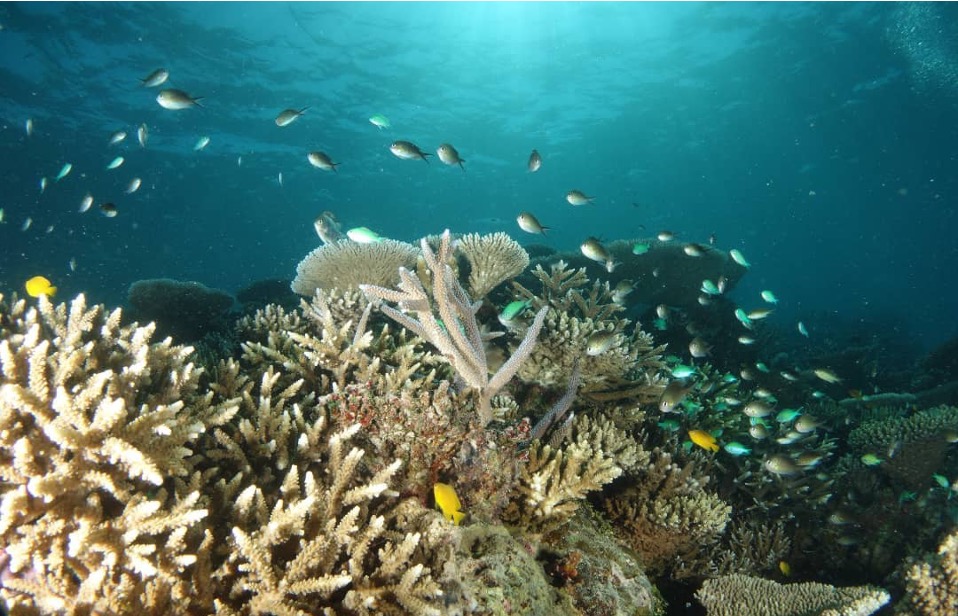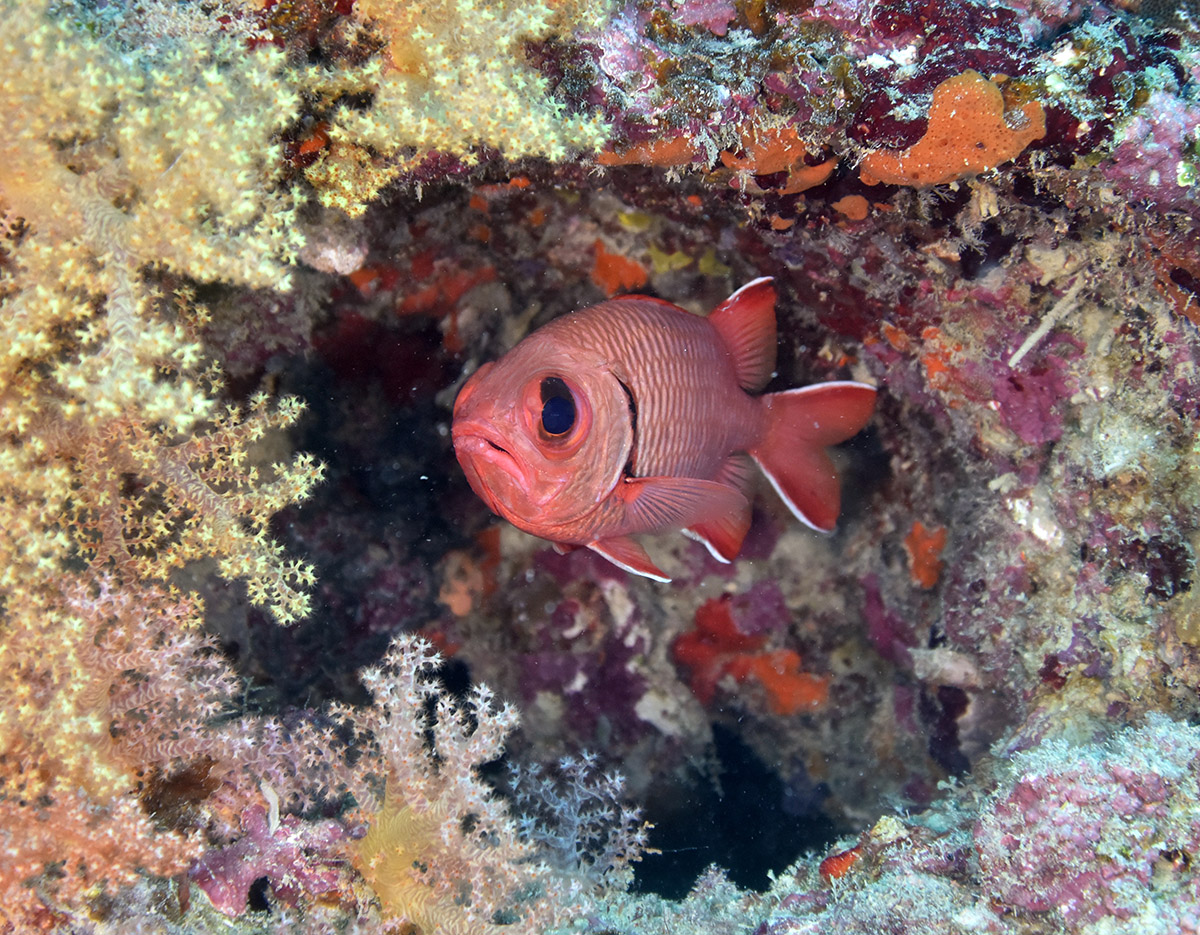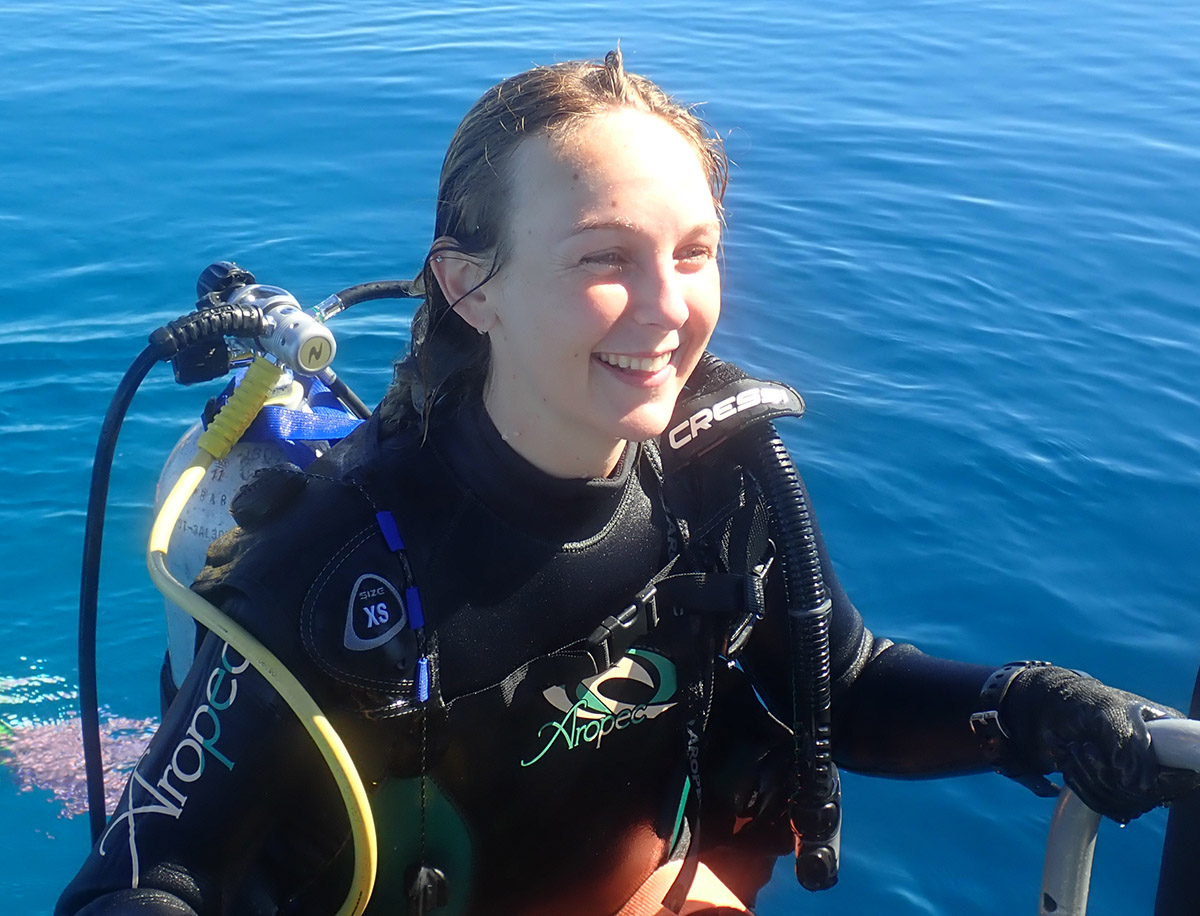While scientists have known for some time about visual adaptations that help fish to see and survive in the dark, we did not understand how they work. Until now.
University of Queensland researchers Dr Fabio Cortesi and Dr Lily Fogg have been studying the visual system of nocturnal coral reef fish to uncover how these fish use specialised retinas for faster and more sensitive sight in low-light conditions, giving the fish the equivalent of in-built night-vision
This knowledge provides insights into the sensory systems of other animals, including humans, and new avenues to explore imaging technologies such as high-sensitivity light sensors.

Dr Fogg, your latest research at the Queensland Brain Institute is about the specialised retinas of nocturnal reef fish. What did you discover?
Most species, including humans, have one layer of dim-light active rod receptors that help us to see in the dark. But we know that over 100 species of deep-sea fish have multiple rod layers stacked on top of each other, also known as multibank retinas. We studied two nocturnal reef fish that also have them.
Their multibank retinas have as many as 15 layers of light-sensitive rod cells at the back of their eyes, but we didn’t know why they have them or how they work. We thought it was so they could catch more light or see colour at night, but that’s hard to prove.
We discovered how these multibank retinas work to give some fish species faster vision and greater sensitivity to light, giving us new insight into unconventional visual systems and their capabilities. The layers work to catch the light more efficiently, with molecular modifications speeding up the neuronal mechanism behind the fish’s vision.
How do you study vision in coral reef fish?
We chose two species of nocturnal reef fish – the sammara squirrelfish and the lattice soldierfish – for our experiments. They have multibank retinas and can survive in aquariums while we study their vision. We compared these two species to another nocturnal coral reef fish that only has one layer of rods – the ochre-striped cardinalfish.

We used a non-invasive technique to place electrodes on their eyes to measure how they respond to evenly spaced light flashes and found they could distinguish between very fast flashes of light. This indicates they may see moving objects, such as predators, much faster than species with a single rod layer.
We also studied the cellular architecture of the retina and the visual genes that it expresses to build an understanding of the visual system from genes to structure to function.
Using light stimuli with decreasing brightness, we also found that the squirrelfish and soldierfish had higher sensitivity in dim light, compared to a nocturnal cardinalfish with a single layer of rods. This shows that the multibank retina is used both to speed up vision and increase the sensitivity of the fish’s vision in the dark – the proverbial ‘night-vision goggles’.
In a related study, we tested their colour vision, training them to respond to a visual cue (like tapping a coloured spot) for a food reward and then adjusting the colour. All of these experiments are tricky as we must darken our lab and wear night vision goggles to conduct them. Because the fish outperformed our initial equipment, we are still in the process of gathering enough data to see if multibank retinas help them to see colour.
How could your discovery inspire sensory technology?
Human vision relies on two types of photoreceptors (light-sensitive cells) – rods and cones. Rods are sensitive to dim light, so we use them to see at night, but we only have one layer – limiting our vision. During the day, we use the cones to see colour.
By studying fish that can deal with ultra-low light levels, we could design new light sensors that work differently from existing technology, that are not only very sensitive but also resolve information to a degree that allows seeing a clear colour picture in the dark.

Dr Cortesi, you worked with Dr Fogg on this research. What else can it teach us?
Soldierfish and squirrelfish are nocturnal reef fish species that live in shallow waters, but our findings could also apply to deep-sea animals. Deep-sea species inhabit one of the dimmest habitats on the planet and evolutionary pressures have pushed some of their visual systems to the extreme, forcing them to develop unusual and fascinating adaptations. However, these animals are very difficult to study because they do not survive in aquariums, and the harsh pressures of the deep ocean make it hard for us to observe them in nature.
What’s next for this research?
We continue to build on this knowledge, studying how animals see and survive in diverse ecosystems from coral reefs to the deep sea. Many of these ecosystems are threatened by anthropogenic change. The visual system underlies many life-supporting behaviours, such as feeding, evading predators and finding a mate, so understanding how they respond to this change could inform future conservation work.
One of the avenues we are exploring is how this adaptation may help us understand eye diseases like glaucoma, which is usually caused by increased eye pressure that progressively damages the optic nerve. It’s very early days for this research project, and we need to gather much more data before we can draw any conclusions.

What are the advantages of studying the senses of coral reef fish?
The sensory systems of coral reef fish share many fundamental features and mechanisms with humans, but we can study these model systems more easily than humans.
Coral reef fish can live in our aquariums, unlike deep-sea creatures that do not tolerate enclosed environments, so they can also give us insights into other species that are more difficult to study. We can also conduct these experiments on live coral reef fish without having to use invasive techniques, like opening their brains to take measurements.
One of the key advantages is that we can observe how these fish adapt to changes in our climate. Vision is one of the senses that is affected by changes in oxygen and temperature. For example, higher ocean temperatures increase the speed of vision – but the effect might not be to the same degree for all species. By observing the changes happening in the ocean layers and the animals that inhabit them, we can learn about our whole ecosystem to better protect it for future generations to enjoy.



